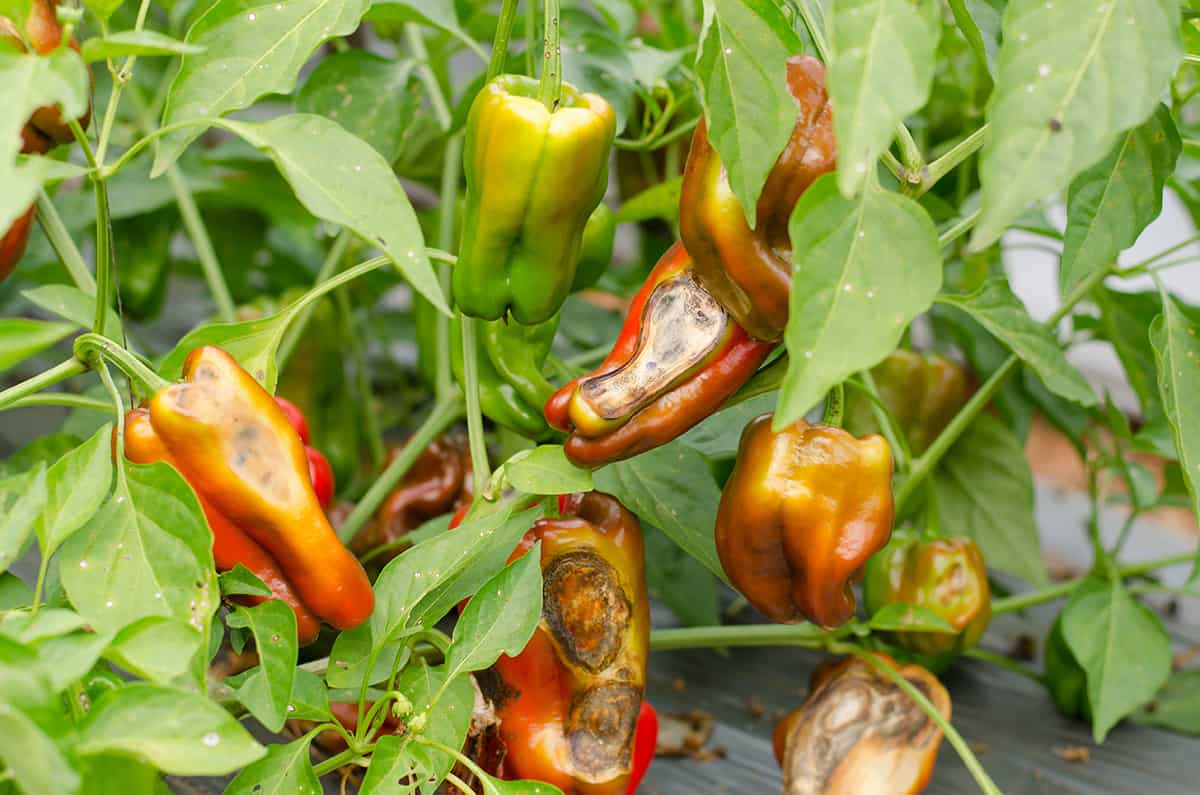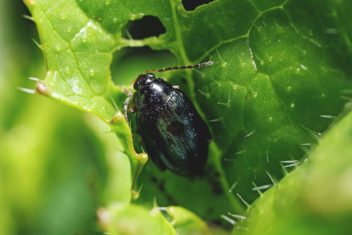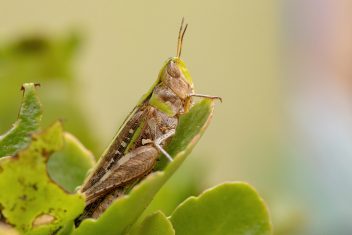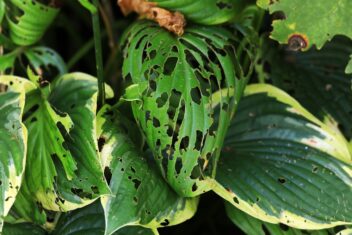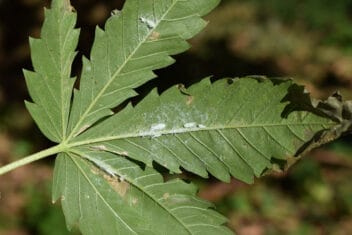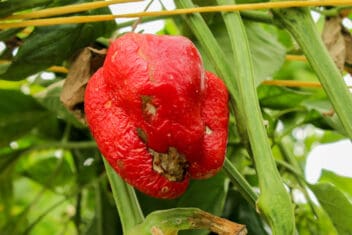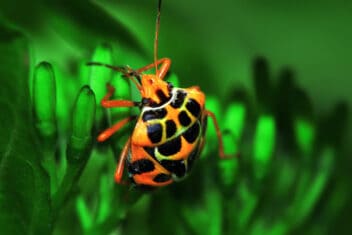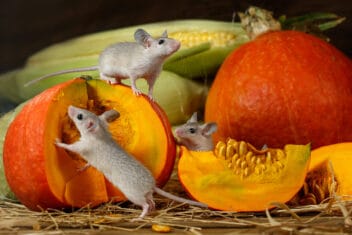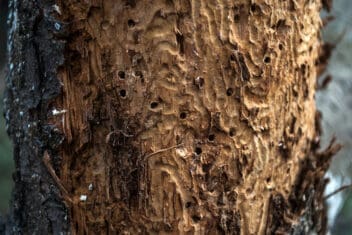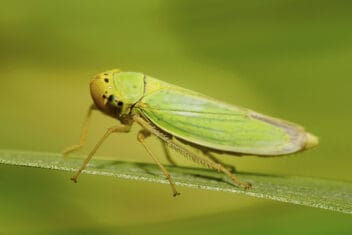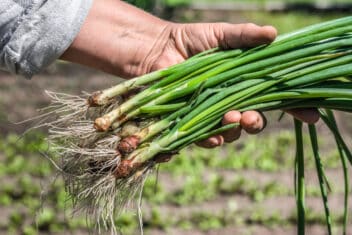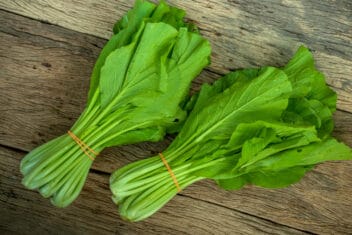Pepper plants are easy to grow, but unfortunately, there are many pepper pests and diseases you may encounter in your garden, and either issue can result in your plants dying.
Being prepared to face whatever issues come your way is important for any gardener, but especially if you hope to eat your crop.
Luckily, you can learn preventative measures, like removing garden debris, allowing air circulation, and rotating crops, to help stop pests and diseases from finding your garden. If that fails, we have helpful solutions to your gardening woes.
5 Common Pepper Pests
Compared to other plants, pepper plants tend to have fewer pest problems, but they aren’t exempt. There are plenty of insects that think these plants are delicious and snack-worthy. Here are a few of the most common pepper plant pests.
1. Aphids
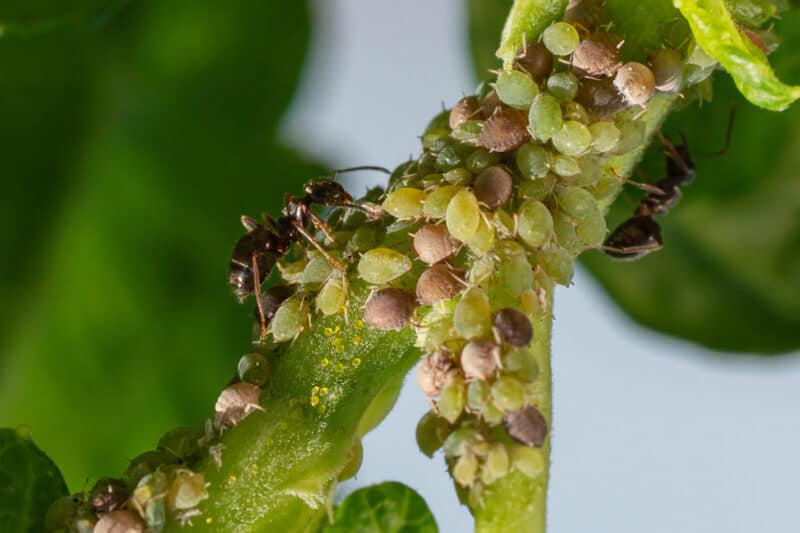
One of the most common pepper pests that gardeners deal with are aphids. These are small, soft-bodied insects that like to stick to the underside of leaves and the stems of plants. Aphids are typically green or yellow in color, but some are red, pink, brown, or black. They like to suck out the sap from plants while secreting a sticky substance called honeydew that attracts ants and sooty mold.
Small aphid infestations are rarely a problem, but larger infestations can cause serious issues. Prune off parts of the plant with the most aphids and use neem oil to spray the leaves and any developing fruit. You also can knock these pests off of your plants with strong jets of water.
Here’s our guide to treating aphid infestations for more information.
2. Colorado Potato Beetle
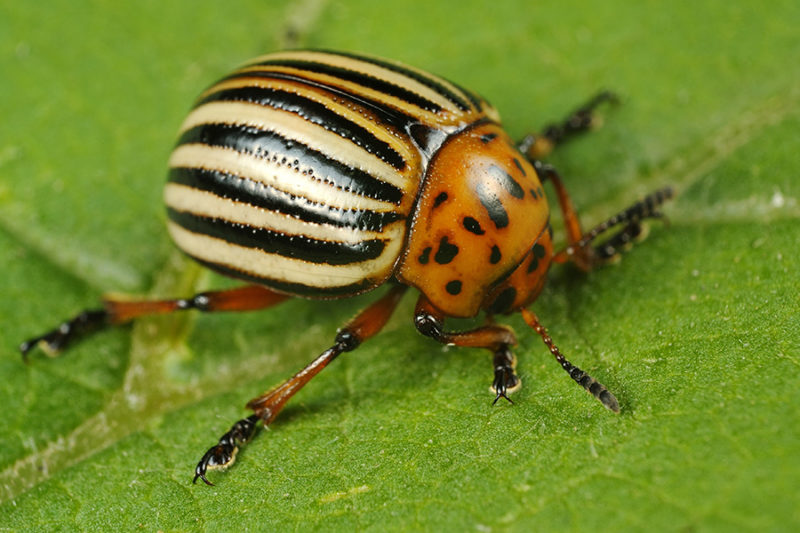
These pests don’t only strike potato plants; they love to eat pepper plants as well. Potato beetles feed on the foliage, and severe infestations completely defoliate plants. The adult potato beetles are identifiable because they are black with yellow stripes, and the larvae are red with black heads.
Adult beetles emerge in the spring, and the females lay eggs in batches of two dozen or more. It’s important to handpick the adults and larvae off of the plant as you spot them. You can also apply Bacillus thuringiensis to your garden, which effectively controls the larvae, but you have to apply Bt frequently for it to work.
3. Cutworms
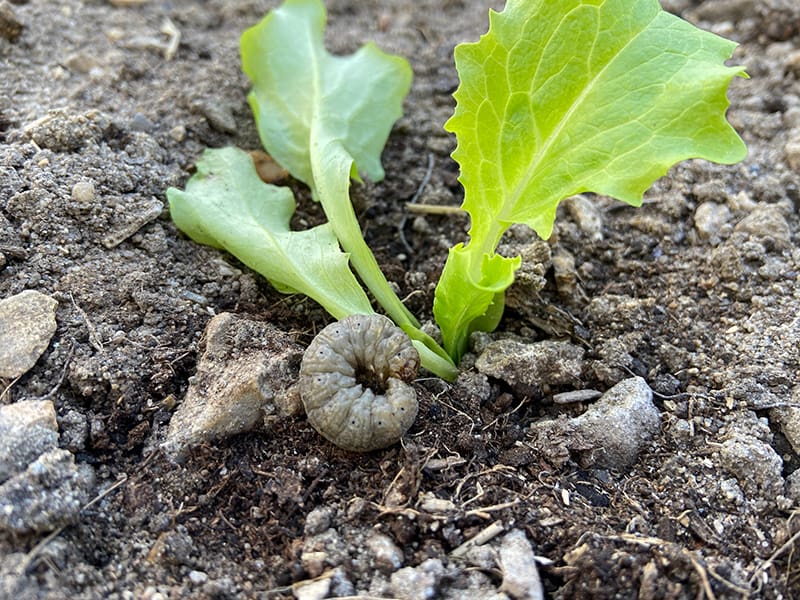
One of the most common pepper pests is cutworms that target seedlings, chewing through the base of the young plants almost overnight. They also chew on the leaves. Cutworms are nocturnal, so if you go through your garden at night with a flashlight, you can pick these pests off by hand.
Raking the soil around the base of your plants helps to expose the cutworms so you can remove them by hand. Sprinkling coffee grounds, eggshells, and diatomaceous earth help to discourage pests. You also should make a collar around your plants with aluminum foil or cardboard to stop cutworms from eating the stems of your plants.
Read our guide on how to get rid of cutworms in your garden.
4. Flea Beetles
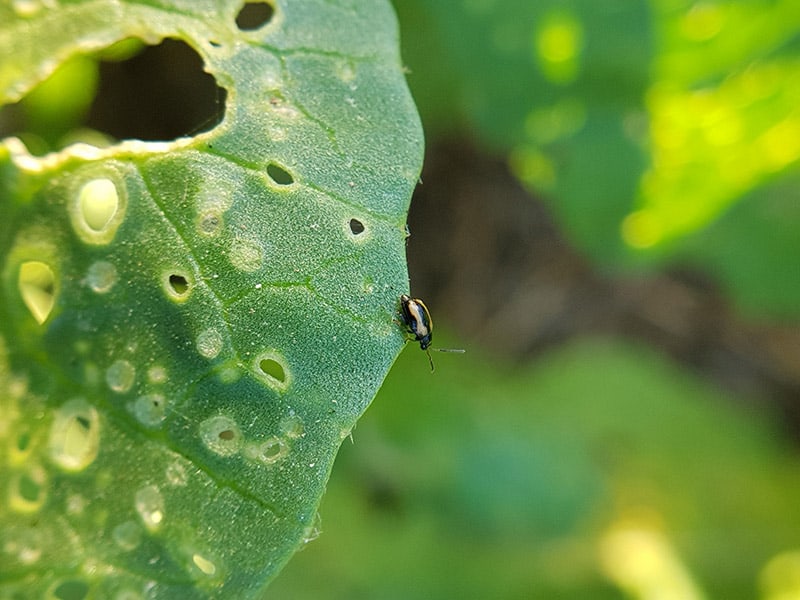
Flea beetles love pepper plants; they’re one of the most common pepper plant pests. They cause small holes or pits in the leaves, making the leaves look like Swiss cheese. Young plants and seedlings are most likely to face damage from flea beetles, reducing or stunting the growth of plants.
Floating row covers placed over your vulnerable plants is a good place to start. If you put the covers on your garden beds as soon as you plant the seedlings, they’ll be able to establish before the beetles become a serious problem. Mature plants are less vulnerable to flea beetles.
If you already have flea beetle problems, there are a few things that you can do. First, a few applications of diatomaceous earth effectively take care of these pests, along with neem oil. Both are organic gardening safe. If you aren’t an organic gardener, consider using insecticides that contain carbaryl, spinosad, bifenthrin, and permethrin.
Read more about flea beetles in your garden.
5. Pepper Weevil
These pests like to feed on the foliage of the pepper plants, especially the buds and young fruits. The larvae feed on the fruits, causing them t become misshapen and discolored. Eventually, the buds and fruits drop from the plant.
These pests reproduce quickly; multiple generations happen each year. That makes controlling these pests tricky because you need to kill all of them, eggs included, or they keep coming back.
Removing infected plants is a starting point to get rid of pepper weevils, and make sure you remove any dropped fruits on the soil surface. Spraying plants with insecticides that contain pyrethrin are an effective option to get rid of pepper weevils.
5 Common Pepper Diseases
Pests aren’t the only problem your pepper plants will have; pepper plant diseases are common as well. Dealing with pepper plant diseases is frustrating, and you have three possible infections: bacteria, viral, and fungal. Let’s look at the most common diseases.
1. Anthracnose
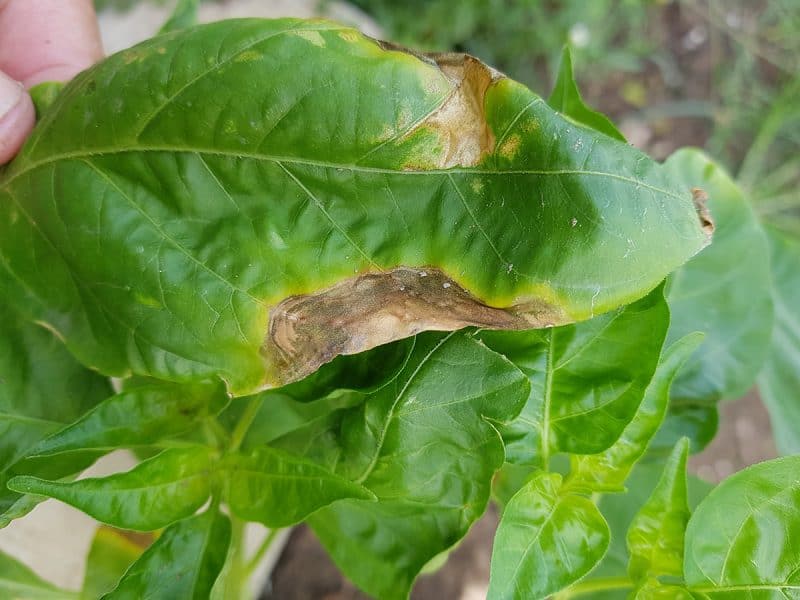
Anthracnose is a fungal infection that goes after most vegetable plants and causes massive crop damage if left untreated. It causes circular lesions to form on the fruits; these lesions have tan, orange, or black rings in the center. Gradually, the lesions enlarge, sometimes covering the entire fruit, and you might notice lesions on the leaves.
Dealing with anthracnose is tricky at times. Start by planting disease-free seeds and rotating crops is one of the best ways to prevent this disease.
Take a look at our guide to anthracnose.
2. Mosaic Virus
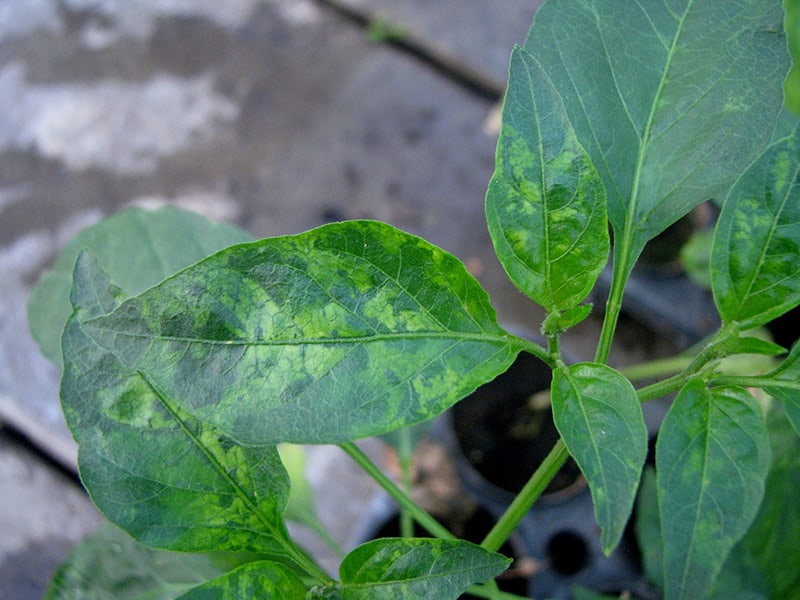
As the name suggests, mosaic virus is a viral infection of plants, and once your plant is infected, there is nothing you can do to get rid of it. This viral disease spreads either through the seeds, the soil, or sap-sucking insects like aphids.
Several symptoms indicate mosaic virus. You might notice green and yellow mottled leaves and overall stunted growth of the plant. This virus lowers pepper production, and it causes a bumpy surface on the peppers that form.
Once infected, no treatment will help your plants. The best thing to do is remove the pepper plants from your garden and burn them to stop the spread. Instead, gardeners recommend that you focus on pest preventative measures, like keeping pests at bay, to hopefully avoid this viral infection.
Learn more about the Tobacco Mosaic Virus by reading our guide.
3. Pepper Leaf Spot
Pepper leaf spot is a common bacterial infection that is most common in rainy, humid, warm climates. Bacteria love these conditions, so they spread from plant to plant easily by touch, seeds, and soil.
Pepper leaf spot causes several symptoms on your plant, like yellow and green spots on the leaves that change to brown spots in later stages. You might notice raised, corky spots on the peppers, and the peppers eventually start to decay.
Ensure you remove all pepper plants infected with pepper leaf spot; the bacteria spreads too easily to keep these plants in your garden. Then, try spraying with a natural fungicide. Even though leaf spot is bacterial, fungal treatments have been helpful for this infection. Copper-based fungicides are most effective.
4. Phytophthora Blight
Phytophthora blight is a soil-borne plant disease that typically spreads when water splashes the soil onto the foliage. Most people are familiar with early and late blight; this is similar but not the same thing.
A few of the symptoms that Phytophthora blight causes are large, brown leaf spots that lead to wilting leaves. The stems turn brown or black at the base of the plant, or the roots rot, leading to the plant death. The fruits also rot when they come in contact with infected soil.
Unfortunately, like early and late blight, there are no effective treatments for Phytophthora blight. The best steps are to use preventative measures like planting your pepper plants in raised garden beds or containers to improve drainage. It’s also essential not to overwater your garden.
5. Verticillium Wilt
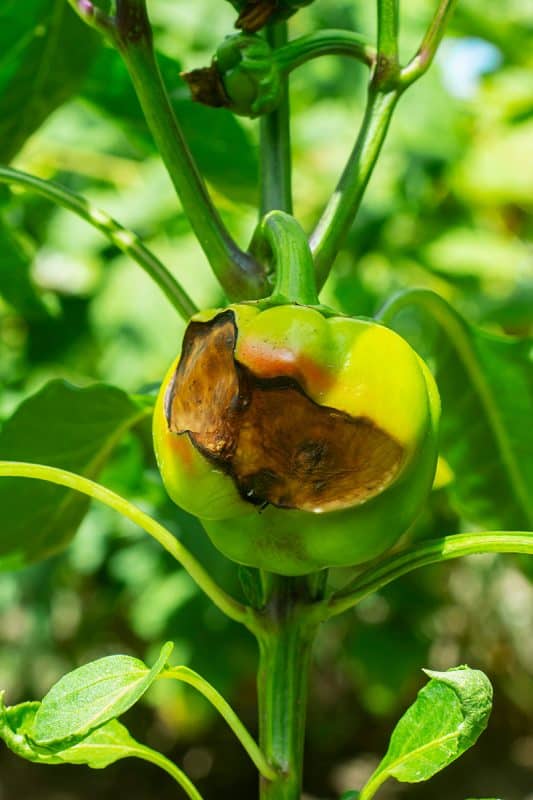
Verticillium wilt is a bacterial infection that affects pepper plants and other vegetable plants, and it damages entire crops if not caught early enough. It’s most common throughout the southeastern United States.
This bacteria blocks the plant’s vascular tissue, making it impossible to send water and nutrients up the stem to the rest of the plant. The symptoms tend to start on one side of the plant first; you’ll notice wilting and discoloration start on one side and gradually extend to the other side. As the bacteria grow, it leads to the entire collapse and death of the plant.
Always remove infected plants and destroy them immediately. Adding beneficial bacteria to the soil is one way to help treat verticillium wilt, but this devastating disease is hard to control.
Take a look at our guide on how to treat verticillium wilt.
